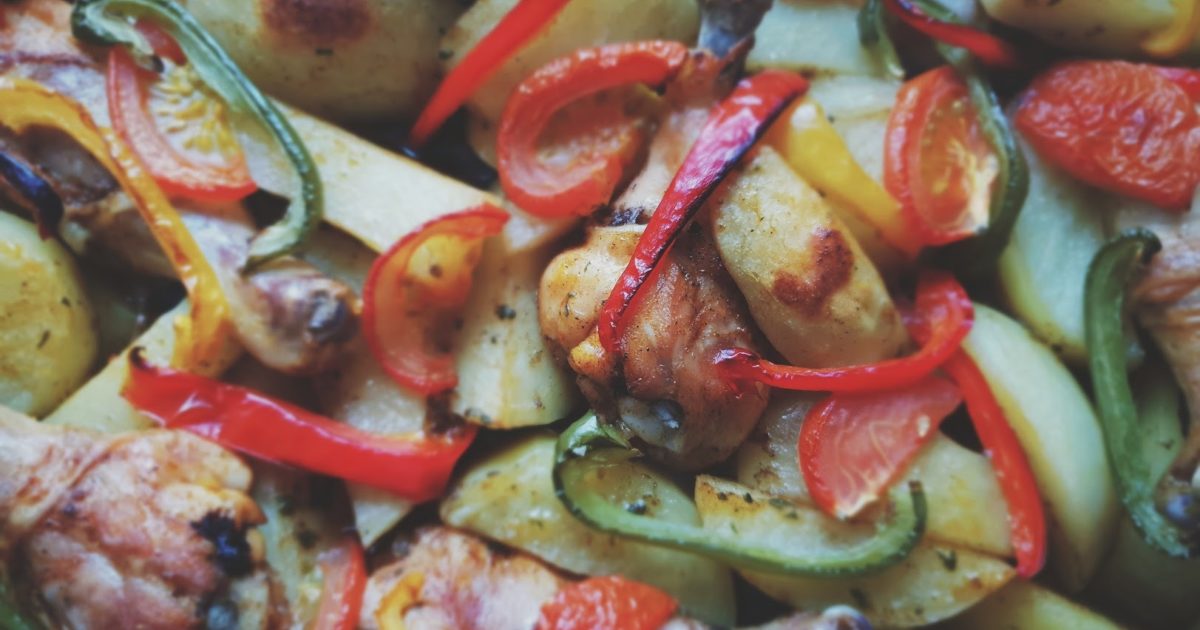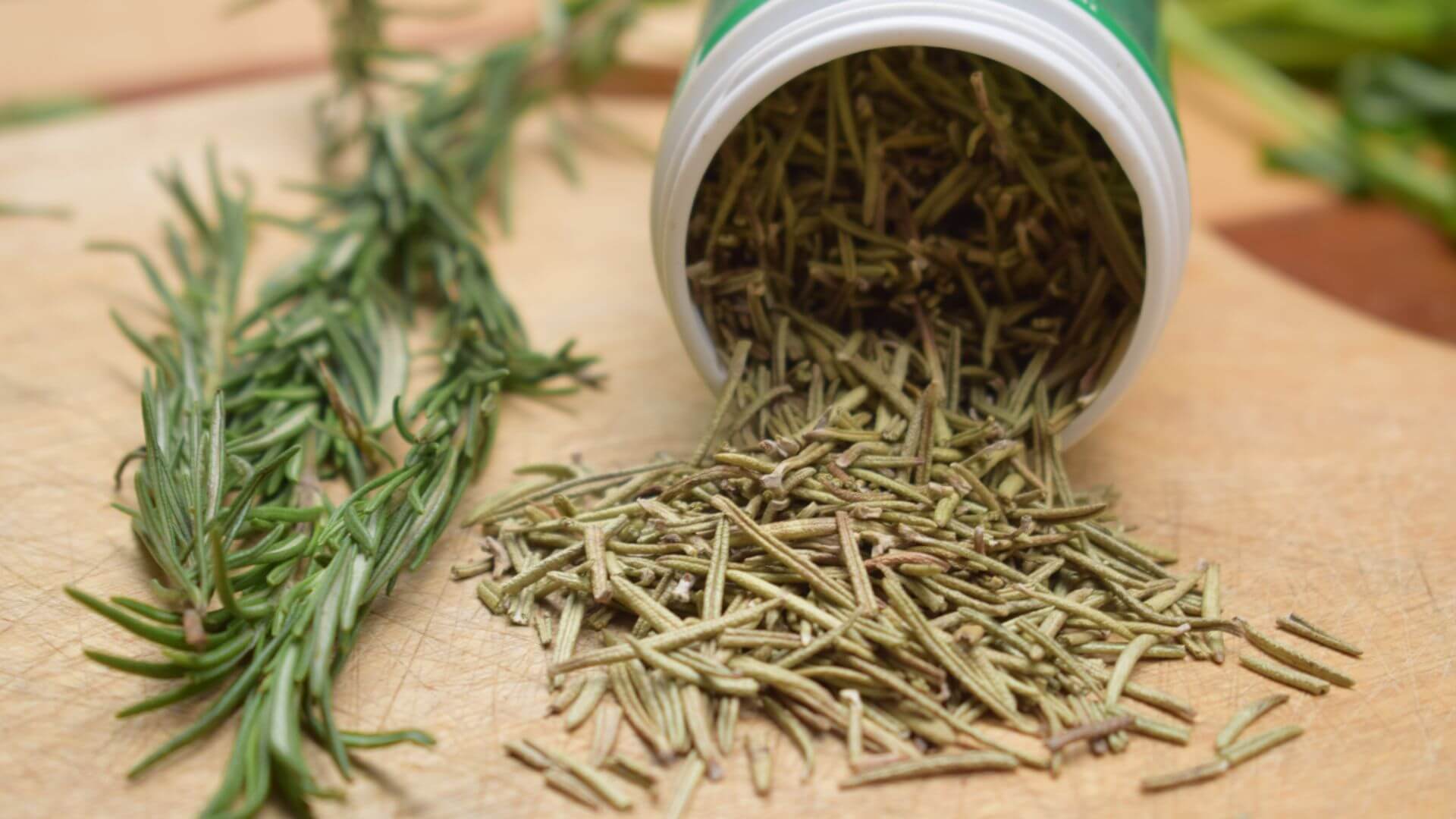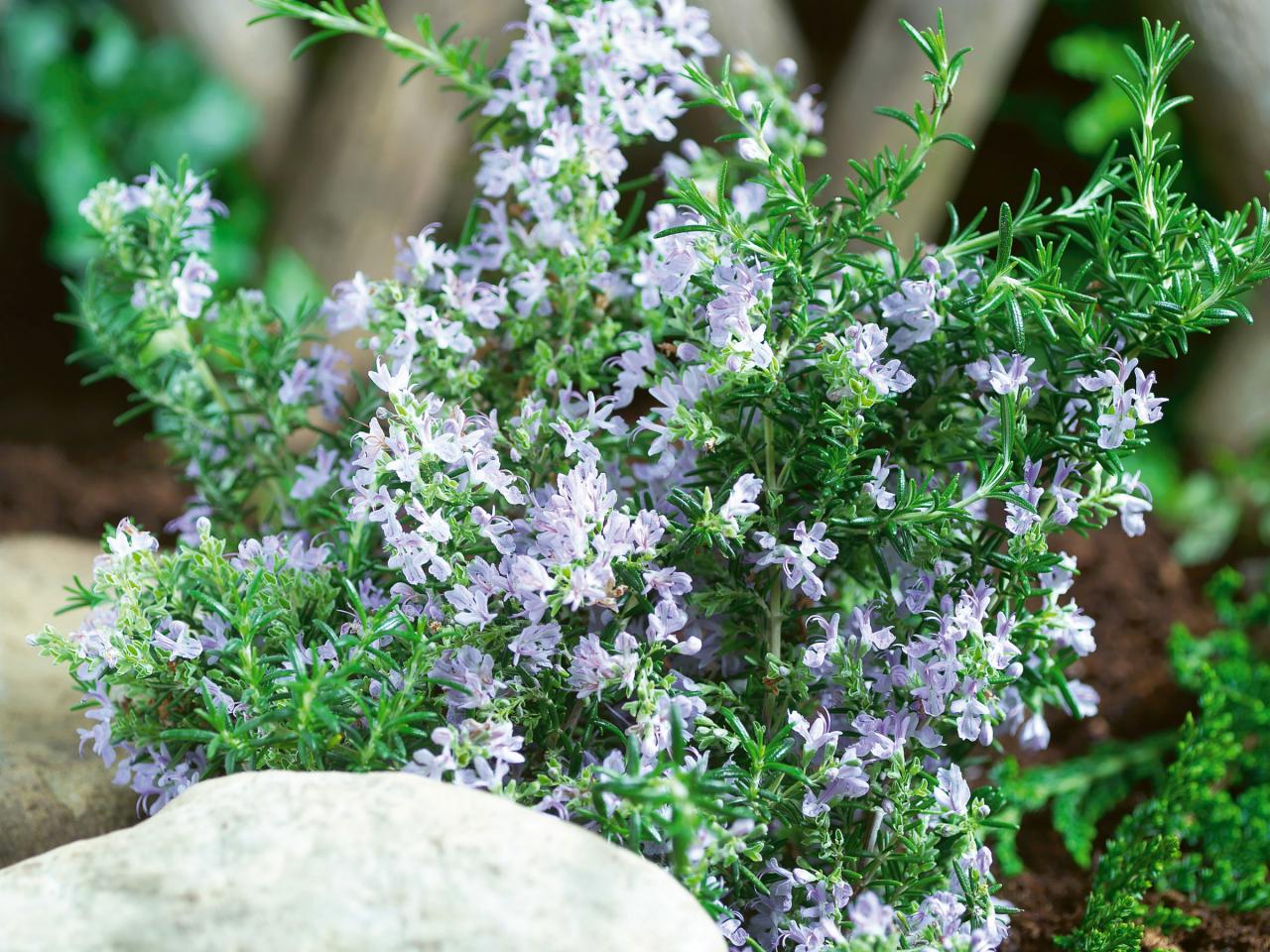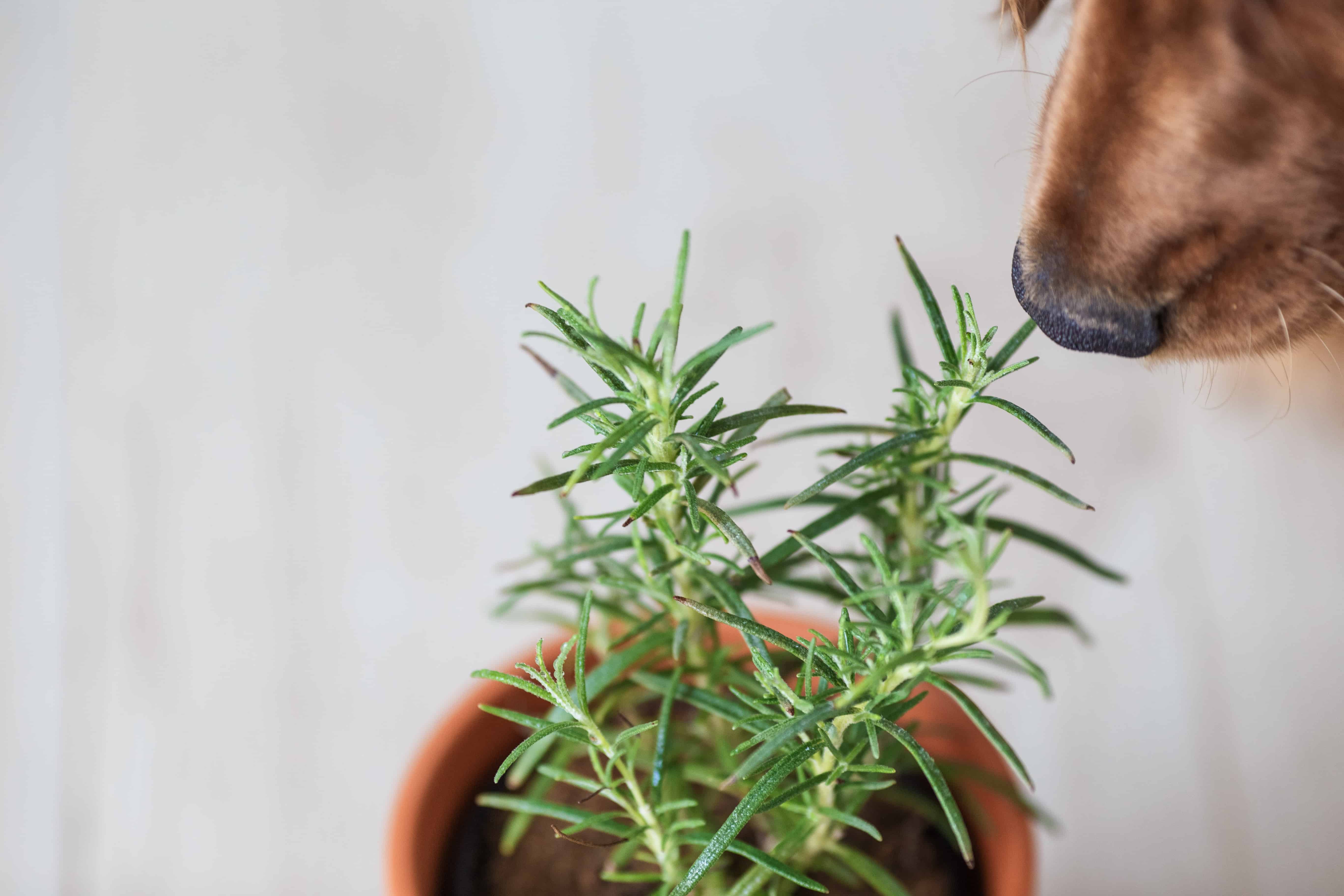Home>Gardening News and Trends>Latest News>Does Dried Rosemary Soften When Cooked
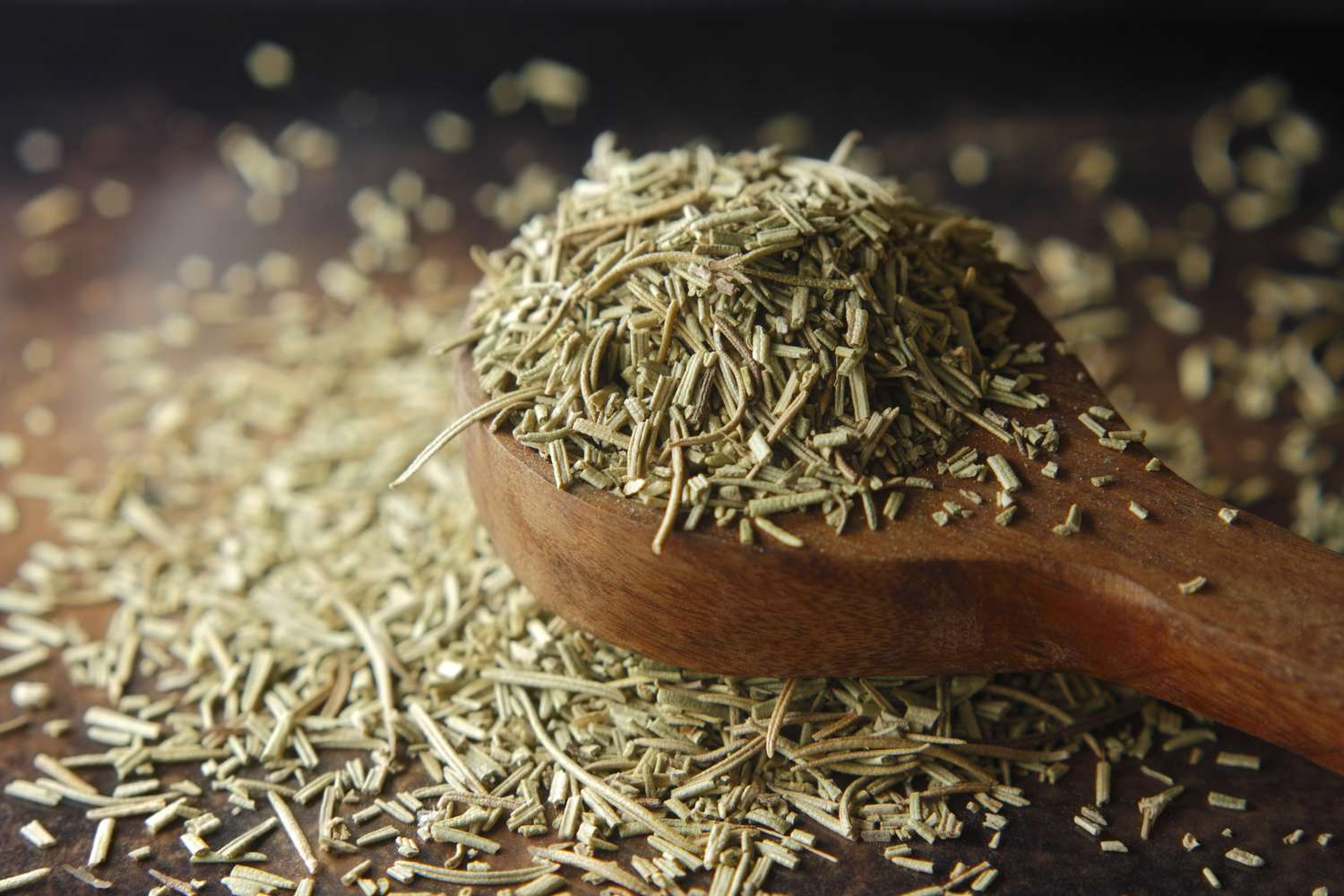

Latest News
Does Dried Rosemary Soften When Cooked
Published: February 2, 2024
Discover the latest news about dried rosemary and its softening properties when cooked. Explore the various culinary uses and benefits of this versatile herb.
(Many of the links in this article redirect to a specific reviewed product. Your purchase of these products through affiliate links helps to generate commission for Chicagolandgardening.com, at no extra cost. Learn more)
Table of Contents
Introduction
When it comes to cooking, herbs play a crucial role in adding flavor, aroma, and depth to various dishes. One such herb that is widely used in culinary endeavors is rosemary. This aromatic herb is known for its distinctive pine-like fragrance and its ability to elevate the taste of both savory and sweet dishes.
While fresh rosemary is readily available and often preferred by chefs for its vibrant flavor, dried rosemary is a convenient pantry staple for many home cooks. Dried rosemary is made by removing moisture from the fresh herb, resulting in a more concentrated flavor profile and an extended shelf life.
But what happens to dried rosemary when it is subjected to the heat of the cooking process? Does it soften and release its flavors just like fresh rosemary? In this article, we will explore the properties of dried rosemary and delve into the question of whether it softens during cooking.
What is dried rosemary?
Dried rosemary is the result of the dehydration process applied to fresh rosemary leaves. The leaves are carefully harvested from the rosemary plant and then dried to remove the moisture content. This preservation method not only extends the shelf life of the herb but also intensifies its flavor and aroma.
Rosemary, scientifically known as Rosmarinus officinalis, is an evergreen shrub native to the Mediterranean region. It belongs to the mint family and has been used for centuries both as a culinary herb and for its medicinal properties. The plant features needle-like leaves that are rich in essential oils, which contribute to its distinct scent and flavor.
When the fresh leaves are dried, they undergo a transformation. The moisture is removed, leaving behind concentrated essential oils and flavor compounds. As a result, dried rosemary has a stronger and more pronounced taste compared to its fresh counterpart.
To produce dried rosemary, the freshly harvested leaves are typically hung upside down in a well-ventilated area. This allows them to air dry naturally over a period of time. Alternatively, some commercial producers may employ methods such as using drying racks or ovens set at a low temperature to expedite the drying process.
Once the leaves are completely dry, they are typically stored whole or crushed and packaged for sale. Dried rosemary is widely available in both loose form and in spice jars, making it easily accessible for culinary enthusiasts around the world.
Properties of dried rosemary
Dried rosemary possesses several properties that make it a valuable ingredient in the culinary world. Here are some key characteristics of dried rosemary:
- Flavor profile: Dried rosemary offers a robust and savory flavor that is often described as woody, earthy, and slightly peppery. Its intense flavor makes it a popular choice for seasoning meats, roasted vegetables, and hearty soups.
- Aroma: The aroma of dried rosemary is distinctly fragrant and reminiscent of pine trees. When added to dishes, its pleasant scent fills the kitchen and adds an enticing element to the overall culinary experience.
- Texture: Dried rosemary leaves have a slightly rough and brittle texture due to the moisture being removed during the drying process. This texture makes it easy to crush or grind the herb, allowing for better distribution of flavor throughout the food.
- Long shelf life: The removal of moisture from rosemary leaves significantly extends their shelf life. Dried rosemary can be stored for months or even years, retaining its flavor and aroma when stored properly in a cool, dark place.
- Concentrated potency: Drying intensifies the essential oils and compounds present in rosemary, resulting in a more concentrated flavor. This makes dried rosemary a versatile and potent ingredient, requiring smaller quantities to achieve the desired taste compared to fresh rosemary.
In addition to its culinary properties, dried rosemary is also believed to have certain health benefits. It is rich in antioxidants and anti-inflammatory compounds, which have been associated with various health-promoting effects, including improved digestion and memory enhancement. However, it’s important to note that these benefits are generally obtained through regular consumption of rosemary as part of a balanced diet, rather than through occasional use in cooking.
Does dried rosemary soften during cooking?
One common question that arises when using dried rosemary in cooking is whether it softens during the cooking process. Unlike fresh rosemary, which has a tender texture, dried rosemary leaves may initially seem stiff and brittle. However, with the application of heat and moisture, dried rosemary does soften to some extent.
When exposed to the cooking liquid and heat, the dried rosemary leaves absorb some of the moisture, causing them to rehydrate and become more pliable. While they may not reach the same level of tenderness as fresh rosemary, the softened dried leaves still release their flavors and infuse the dish with their distinctive taste.
It’s important to note that the amount of softening can vary depending on the cooking method and duration. Simmering or stewing foods for an extended period of time will allow the dried rosemary to undergo more significant softening. However, if you prefer a more subtle presence of rosemary flavor and a slightly firmer texture, you can add the dried leaves towards the end of the cooking process.
It’s worth mentioning that if you find the texture of dried rosemary leaves to be too coarse or unappealing even after cooking, you have the option to grind them into a finer consistency using a mortar and pestle or a spice grinder. This allows the flavor to disperse more evenly throughout the dish while minimizing any potential texture concerns.
While dried rosemary does soften during cooking, it’s important to use it judiciously as the flavors can remain quite potent. Remember that a little goes a long way, so it’s recommended to start with small amounts and adjust to taste.
Factors that affect the softening of dried rosemary
The softening of dried rosemary during cooking can be influenced by various factors. Understanding these factors can help you achieve the desired texture and flavor in your dishes. Here are some key elements to consider:
- Cooking method: The cooking method you choose can significantly impact the softening of dried rosemary. Simmering or braising dishes for a longer duration allows more time for the leaves to rehydrate and soften. On the other hand, if you’re using dried rosemary in quick-cooking dishes like stir-fries or sautés, the leaves may not have as much time to soften but will still release their flavors.
- Amount of liquid: The amount of liquid present in the dish can affect the softening of dried rosemary. Dishes with more liquid, such as soups, stews, and sauces, provide more moisture for the herb to absorb, resulting in softer leaves. Conversely, dishes with minimal liquid may not contribute enough moisture for significant softening.
- Cooking time: The duration of cooking plays a role in the softening process. Longer cooking times allow more opportunity for the dried rosemary to rehydrate and soften. If you’re using dried rosemary in a slow-cooked recipe, the extended cooking time will yield a softer texture compared to a quick-cooking recipe.
- Quality of dried rosemary: The overall quality of the dried rosemary can affect its softening ability. Opt for high-quality dried rosemary from reputable sources to ensure better flavor and texture. Freshness and the way it has been processed can impact how well it softens during cooking.
- Temperature: The temperature at which you cook the dish can also affect the softening of dried rosemary. Higher temperatures can expedite the rehydration process, leading to quicker softening. However, be cautious of excessively high heat, as it may cause the herb to lose its flavor and become bitter.
By considering these factors and adjusting your cooking techniques accordingly, you can optimize the softening of dried rosemary and achieve the desired texture and flavor in your culinary creations.
Techniques to soften dried rosemary while cooking
If you want to ensure that dried rosemary softens adequately while cooking, there are several techniques you can employ. By following these methods, you can maximize the rehydration of the herb and enhance its texture and flavor in your dishes. Here are some techniques to consider:
- Simmering: One of the most effective ways to soften dried rosemary is by simmering it in liquid for a longer duration. Whether you’re making a homemade soup, stew, or sauce, adding dried rosemary early on and allowing it to simmer will allow the leaves to rehydrate and soften gradually.
- Crushing or grinding: Before incorporating dried rosemary into your dish, you can crush or grind the leaves to release more flavor and enhance the softening process. By breaking up the dried leaves into smaller pieces, you expose more surface area, making it easier for them to absorb moisture and soften faster.
- Pre-soaking: If you want to expedite the softening process, you can pre-soak dried rosemary in warm water for a few minutes before using it in your dish. This step hydrates the herb and begins the softening process, allowing it to incorporate more seamlessly into your recipe.
- Marinating: If you’re using dried rosemary as part of a marinade for meat or vegetables, allow the ingredients to marinate for an extended period. The marinade’s flavors and moisture will help soften the dried rosemary and infuse the dish with its aromatic properties.
- Adding to dishes with ample liquid: Choosing recipes that contain a generous amount of liquid, such as soups, stews, and braises, will provide enough moisture for the dried rosemary to absorb and soften. The longer cooking time in these dishes allows the herb to fully rehydrate and release its flavors.
- Using a herb infuser or sachet: To contain the dried rosemary and prevent it from dispersing throughout the dish, you can place the herb in a herb infuser or muslin sachet. This allows the flavors to infuse into the dish while keeping the leaves contained and easily removable if desired.
Remember to consider the cooking time, temperature, and the specific recipe you’re preparing when using these techniques. With a bit of experimentation and adjustment, you can achieve the desired softness and flavor of dried rosemary in your culinary creations.
Culinary uses of dried rosemary
Dried rosemary is a versatile herb that can add depth and aromatic flavors to a wide range of dishes. Its concentrated taste and texture make it a popular choice for both savory and sweet recipes. Here are some common culinary uses of dried rosemary:
- Seasoning meats: Dried rosemary is often used to season various types of meats, including lamb, poultry, beef, and pork. It pairs exceptionally well with roasted and grilled meats, infusing them with its distinct earthy and herbaceous flavors.
- Roasted vegetables: When tossed with olive oil and sprinkled with dried rosemary, vegetables like potatoes, carrots, and butternut squash develop an enticing aroma and a delightful crispy texture. The herb helps to enhance the natural flavors of the vegetables and adds a savory element to the dish.
- Breads and doughs: Adding dried rosemary to bread and dough recipes lends a fragrant and savory note to the final product. Whether you’re making focaccia, breadsticks, or pizza dough, the herb imparts a hint of piney flavor that complements the baked goods beautifully.
- Sauces and marinades: Dried rosemary can be incorporated into sauces and marinades to elevate their flavors. It works particularly well in tomato-based sauces, creamy pasta sauces, and homemade condiments. When used in marinades, dried rosemary infuses meats and vegetables with its aromatic essence.
- Infused oils and vinegars: By infusing oils or vinegars with dried rosemary, you can create flavorful additions to your pantry. Simply place the herb in a container, cover it with the desired liquid, and let it steep for a few weeks. The resulting infused oil or vinegar can be drizzled over salads, roasted vegetables, or used to enhance various dishes.
- Soups and stews: Dried rosemary is a wonderful addition to hearty soups, stews, and broths. Its robust flavor adds complexity to the dish, especially when combined with other aromatic herbs like thyme and oregano. Just remember to add the herb early in the cooking process to allow it ample time to soften and infuse the liquid with its flavors.
- Sweet treats: Although less common, dried rosemary can also be used in sweet dishes. Incorporating a small amount of finely ground dried rosemary into cookies, cakes, or fruit desserts adds a unique twist and brings out the natural sweetness of the ingredients.
Experimenting with dried rosemary in various recipes can unlock a world of culinary possibilities. Its versatile nature and ability to enhance different flavors make it a staple herb in many kitchens around the world.
Conclusion
Dried rosemary is a pantry staple that adds depth, flavor, and aroma to a myriad of dishes. Despite its initial stiff and brittle texture, dried rosemary softens during cooking, releasing its distinctive flavors and infusing the dish with its aromatic profile. Factors such as the cooking method, the amount of liquid, cooking time, quality of the herb, and temperature all play a role in the softening process. By understanding and manipulating these factors, you can achieve the desired texture and maximize the rehydration of dried rosemary.
Techniques like simmering, crushing or grinding, pre-soaking, marinating, and utilizing dishes with ample liquid can enhance the softening of dried rosemary. Furthermore, the culinary applications of dried rosemary are vast, ranging from seasoning meats and roasted vegetables to adding flavor to breads, sauces, and sweets. Its versatility makes it a go-to herb for chefs and home cooks alike.
When using dried rosemary, start with smaller amounts, as its concentrated flavor can overpower a dish if used excessively. Remember to store the herb in a cool, dark place to maintain its quality and potency. Whether you prefer the convenience and long shelf life of dried rosemary or the vibrant flavor of fresh rosemary, this herb is sure to elevate your culinary creations and make your dishes more memorable.
